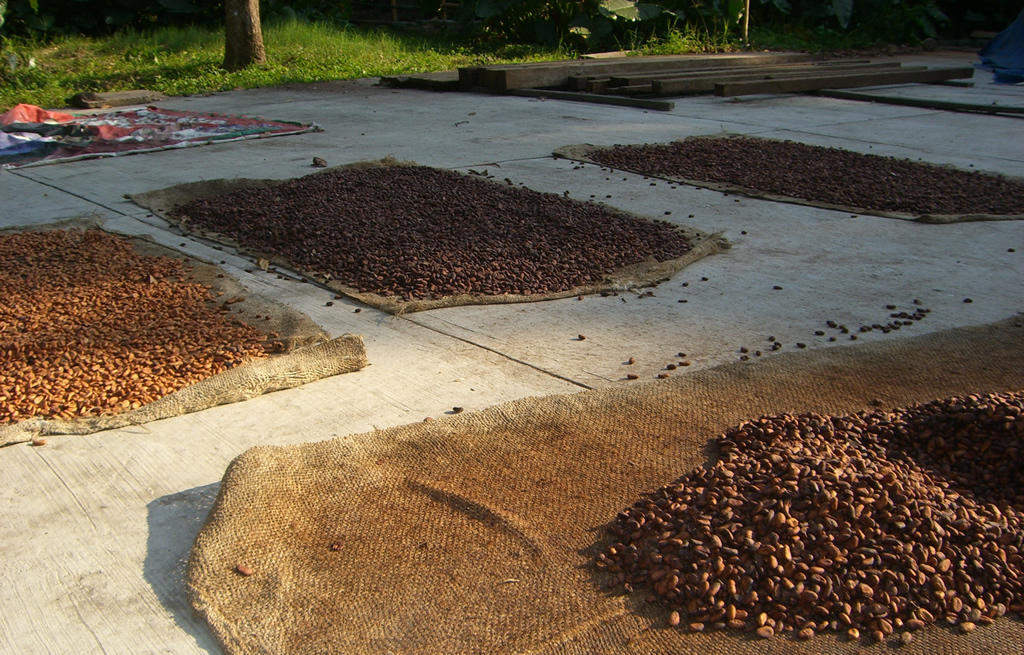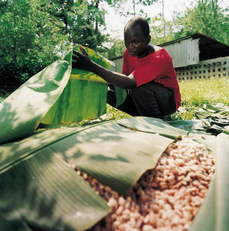
Growing and harvesting

 After harvesting the pods are split by a machine, the precious beans must not be damaged. Debones are scooped with pulp and all and placed in a mountain on job leaves. The banana leaves are folded shut and covered with even more approaches to close the mountain. Now the fermentation process that takes about 6 days begins.
After harvesting the pods are split by a machine, the precious beans must not be damaged. Debones are scooped with pulp and all and placed in a mountain on job leaves. The banana leaves are folded shut and covered with even more approaches to close the mountain. Now the fermentation process that takes about 6 days begins.
The bacteria present in the air multiply and ferment on the sweet pulp, converting it into an acidic juice. The temperature rises in the package and this causes the magical change. The beans changed color from purple to chocolate brown and the cocoa scent developed. This is the first process of superior quality beans.
However, this process is sometimes skipped. There are supporters and opponents of this process between the planters and planters.
 On the basis of the color of the pod and by tapping it, it is determined whether it is ripe. It takes many years of experience to know exactly when the pods are fully ripe for picking. Experienced pickers are highly regarded.The puddles are removed from the tree by cutting the stems.
On the basis of the color of the pod and by tapping it, it is determined whether it is ripe. It takes many years of experience to know exactly when the pods are fully ripe for picking. Experienced pickers are highly regarded.The puddles are removed from the tree by cutting the stems.In some countries, harvesting takes place all year round, but mainly from May to December. In Africa, this is exemplified from September to February.










